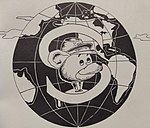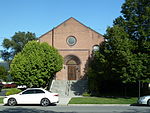Smith's Ballpark
1994 establishments in UtahBaseball venues in UtahCollege baseball venues in the United StatesMinor league baseball venuesPacific Coast League ballparks ... and 4 more
Populous (company) buildingsSports venues completed in 1994Sports venues in Salt Lake CityUtah Utes baseball

Smith's Ballpark (formerly known as Franklin Quest Field, later Franklin Covey Field, and more recently Spring Mobile Ballpark) is a minor league baseball park in Salt Lake City, Utah. It is the home field of the Salt Lake Bees of the Pacific Coast League and the collegiate Utah Utes of the Pac-12 Conference.
Excerpt from the Wikipedia article Smith's Ballpark (License: CC BY-SA 3.0, Authors, Images).Smith's Ballpark
Richards Street, Salt Lake City
Geographical coordinates (GPS) Address Nearby Places Show on map
Geographical coordinates (GPS)
| Latitude | Longitude |
|---|---|
| N 40.741 ° | E -111.893 ° |
Address
Derks Field
Richards Street
84115 Salt Lake City
Utah, United States
Open on Google Maps







